Clutch slippling - Causes
A slippling clutch may have various causes.
Clutch slipping may have various causes. Besides the clutch pressure plate and the clutch disk, the problem is often found in the releasing system. Additional causes include an incorrectly remachined flywheel or installation of the wrong clutch.
Clutch is slippling - Therefore check:
- Release system wear, freedom of movement, adjustment
- Verify that the parts are correct for the vehicle
- Make sure the flywheel is correctly remachined
Clutch facings worn down to rivet heads
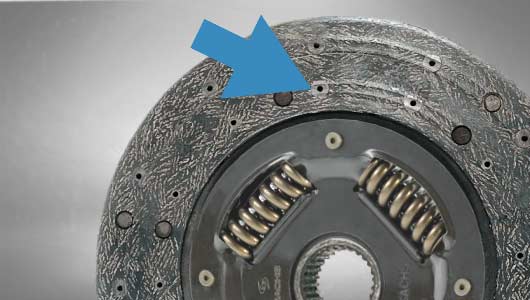
Cause:
- Normal wear for the specific conditions of use
- Frequent start-up operation / incorrect driving style
- Clutch actuation mechanism stiff
- Actuation system not correctly set or reset
- Wrong Clutch
Consequence:
- Full clamp force not available for clutch pressure plate
Clutch facings heavily contaminated with oil or grease
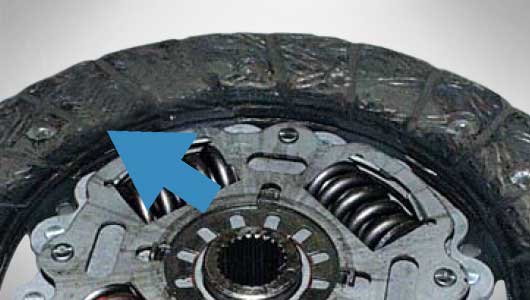
Cause:
- Damaged transmission or engine sealing
- Excessive grease on the transmission input shaft or pilot bearing
- Leakage in hydraulic actuation system
Consequence:
- Lower friction values on facings
Clutch facing burnt or disintegrated
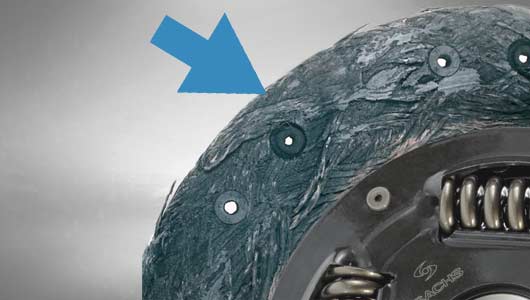
Cause:
- Clutch was permitted to slip constantly
- Vehicle started up in too high a gear
- Insufficient clamp force
- Problems in the release system - no clutch play and consequent stiffness
- Contamination with oil or grease
- Excessive flywheel thickness
Consequence:
- Bonding agent on facing severely deteriorated due to overheating
Facing does not contact entire surface
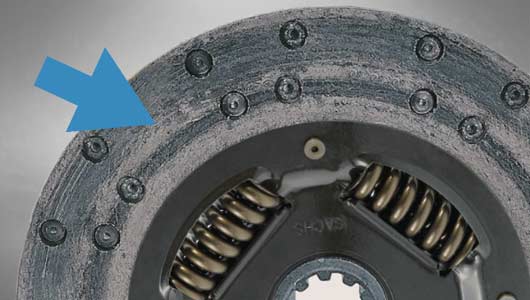
Cause:
- Flywheel was not remachined
- Severe scoring on friction surface
Consequence:
- Lower friction values on facings
Please note:
For new clutch disks, the facing starts off with only peripheral contact (larger friction radius due to convex contact with pressure plate friction surface). As a result, new parts can transmit full power levels even before they are completely run in. This is a quality feature, not a defect!
Clutch pressure plate is overheated
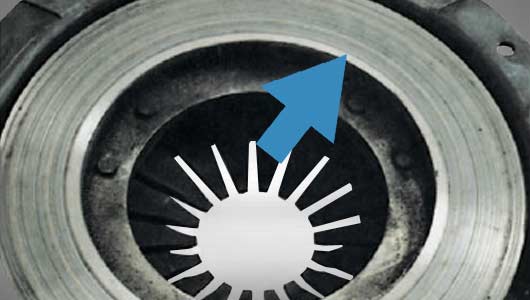
Cause:
- Clutch permitted to slip constantly
- Contamination with oil or grease
- Problems in the release system - no clutch play and consequent stiffness
- Flywheel too thick - remachining not done correctly
Consequence:
- Lower friction values for facings. Insufficient clamp forces and repeated clutch slip will generate more heat than can be absorbed. This results in overheating.
Diaphragm spring tips heavily worn
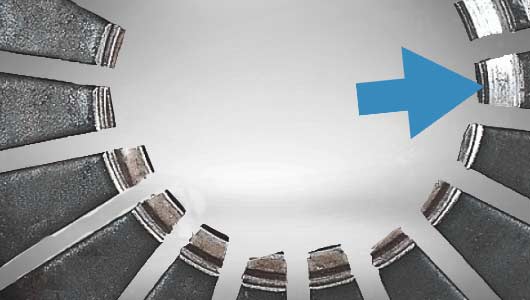
Cause:
- Actuation system worn
- Worn guide tube
- Clutch release bearing preload too high
Consequence:
- The clamp force action is blocked because the clutch release bearing gets stuck, or is less effective due to the high preload.
Diaphragm spring fractured
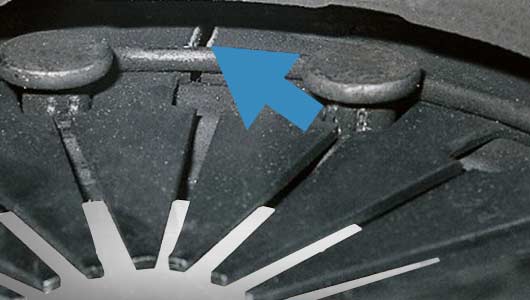
Cause:
- Excessive pressure / release travel path greatly exceeded
Consequence:
- Diaphragm spring clamp force no longer conforms to application design values
Please note:
Also causes drag due to insufficient lift on pressure plate.
Wear-induced ridges on guide cams
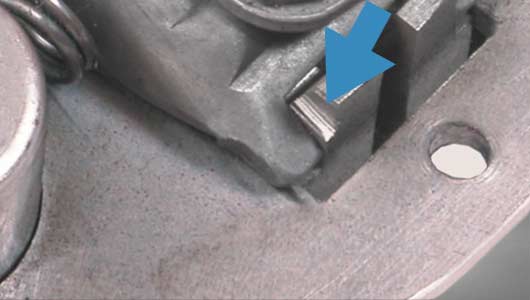
Cause:
- Continuous or off-center releaser contact on the release ring or release levers.
Consequence:
- Clamp force no longer effective because the release levers are blocked by the guide cams when the clutch is engaged.

 English
English







